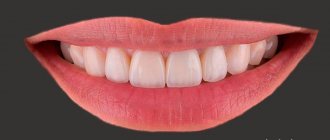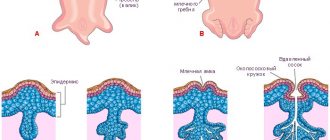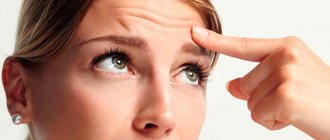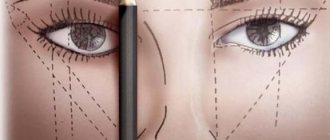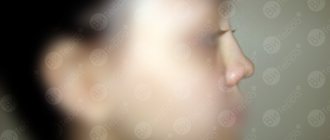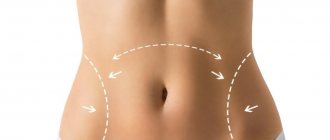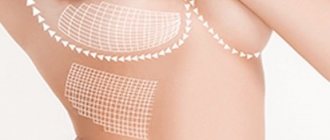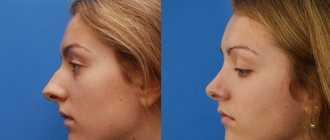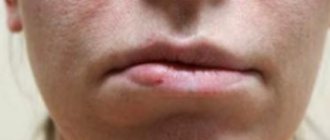Eversion of the eyelid is one of the complications after blepharoplasty. It is a scar pathology that causes physical discomfort to the owner and determines the defect of the lower eyelid. There are several reasons for the formation of this pathology, but in most cases it is plastic surgery of the lower eyelid.
This problem is quite easy to identify, but it certainly needs to be treated as quickly as possible. By protrusion of the eyelid we mean a constant change in its position when the edge of the skin is turned to the side and is not in contact with the eyeball.
Causes of ectropion of the century
The lower eyelid differs in structure from the upper, due to which it is most susceptible to any changes. It deforms faster, does not hold its shape firmly, and the cartilage plate is thin. In order for further therapy to be successful, it is necessary to determine the cause of the pathology as accurately as possible. The most common types are:
- Spastic eversion . Most often it is noticeable during the development of the inflammatory process in the surgical area. Serves as a sign of the orbicularis oculi muscle.
- Scar pathology . During the formation of a scar, the connective tissue tightens the skin, causing the eyelid to protrude greatly.
- Mechanical protrusion . With this pathology, a large seal forms in the area of the eyelids;
- Paralytic protrusion . Occurs when the patient has paralysis of the facial nerve and loss of tone in the facial muscles.
Symptoms of lower eyelid inversion after blepharoplasty
This pathology has two degrees of severity. Usually, even at a mild stage, external signs are quite noticeable: the patient feels a burning sensation in the eyes and profuse lacrimation. With the development of a more severe stage of the pathology, the face may become significantly distorted, and serious complications with vision may develop in the future. Degrees by level of expression:
- partial, when the damage affects only part of the eyelid;
- full inversion
Often the symptoms of pathology development are identical in all situations:
- feeling of a foreign body in the eye, dryness. This sensation is caused by the inverted conjunctiva losing fluid. The sensations may become even more unpleasant later, when ulceration or keratinization of the mucous membrane appears;
- the formation of an empty space between the eyeball and the edge of the skin. In this condition, the mucous membrane of the inner part of the eyelid is exposed;
- redness and irritation of the eyelid skin due to the constant formation of tear fluid;
- incomplete closure of the palpebral fissure, which causes discomfort during blinking;
- inflammation in the conjunctiva. At the same time, the natural process of cleansing the eyes from germs and dust is disrupted, which leads to the development of an inflammatory process;
- increased lacrimation. When the eyelid bulges, the process of tears exiting through the nasolacrimal duct is disrupted. At the same time, it tends to collect in the corners of the eyes and flow down the cheek. Similar sensations can be caused by a cold, when tears flow profusely down the face. In some cases, only surgery will help.
Only the attending physician will help you choose the best way to solve the problem. This depends on the severity of the pathology, and on timely seeking help.
Types of problem solving:
- therapeutic treatment;
- getting rid of eye pathology resulting from ectropion;
- treatment with surgery.
Non-surgical treatment is indicated in the following cases:
- surgical intervention is contraindicated for any reason;
- the pathology is practically invisible visually, and there is no need for surgery;
- Eversion is caused by some disease, the treatment of which will lead to the disappearance of the problem. And during treatment, the patient only needs relief from the condition.
During therapy, the doctor prescribes special medications that help alleviate the condition of a person with ectropion and avoid the development of complications. These include:
- if you have problems closing the eyelid during sleep, you can use a special patch that will fix the eyelid in the desired position;
- artificial tear preparations intended to moisturize the surface and mucous membrane of the eyeball. Basically, they are prescribed to be dripped twice a day;
- in rare cases, in severe situations, the surgeon may stitch the edges of the eyelids. This action is aimed at protecting the eye and the conjunctiva itself from drying out and infection.
Diagnostics
The clinical picture in this case is so obvious that the patient usually makes the primary diagnosis for himself - simply by looking in the mirror. The main diagnostic task of an ophthalmologist is, in fact, not to ascertain or exclude ectropion, but to identify its immediate causes, since they determine both the further prognosis and the response therapeutic tactics.
Surgery to remove eyelid inversion
There are two ways to eliminate the complication: surgical and conservative. The first option involves the use of gymnastics and massage, which stimulate the growth of the tone of the circular muscle. Surgical methods are prescribed depending on the patient’s age, type of defect, and condition of facial tissues. The doctor needs to know the following information:
- the presence of scars or other damage to the skin;
- the cause of ectropion;
- condition of soft tissues in the eye area;
- How weakened are the ligaments that hold the corners of the eye in the desired state?
The task of surgery is to transport the musculoskeletal structure of the eyelid to the desired position and fix it there. This procedure can only be performed by a qualified plastic surgeon or ophthalmologist in a special department. The initial stage of the manipulation is a meeting with the surgeon, who prescribes the necessary tests for the patient. Among them:
- fluorography;
- general blood and urine analysis;
- blood biochemistry;
- electrocardiogram;
- blood for platelets
If there are pathologies, or depending on the general condition and age, the doctor may prescribe additional tests or a consultation with a related specialist.
The duration of the operation is 1-3 hours, depending on the degree of complexity and the chosen method.
In addition to eliminating ectropion and normalizing the natural process of tear secretion, you can get rid of hernial protrusion in the eyelid area, lift the upper corners of the eyes, and remove excess skin. All these nuances of the operation should be discussed during a consultation with a doctor.
Incisions during surgery, as with blepharoplasty, will be made in the natural folds of the eyelids and stitched together in a special cosmetic way, which will help avoid the formation of scars.
Immediately after the operation, the patient will need to stay in a hospital for 24 hours, under the supervision of a doctor. And after discharge, it is worth visiting a doctor for a consultation, only he will be able to control the correct tightening of the tissues and evaluate the result of the correction. For two weeks after the procedure, swelling may remain on the face. They will be most pronounced in the first few hours after the manipulation.
To alleviate the condition, the doctor may prescribe cold compresses and physical procedures. This will speed up the process of resorption of swelling and tissue regeneration.
Complications and contraindications for surgery
Surgery will be prohibited if the patient has the following pathologies:
- diseases of the cardiovascular system;
- diabetes mellitus of any type;
- retinal detachment;
- pathologies of the thyroid gland that cause hormonal imbalance;
- high blood pressure accompanied by crises;
- dry eye syndrome
The negative consequence of this operation is that the inversion cannot be completely removed. There may be a small distance between the eyeball and the edge of the eyelid. There is a small chance of the eyelid turning inwards. Other side effects of the procedure include:
- disruption of the lacrimal gland;
- bleeding in the first days after correction;
- formation of skin cysts;
- the appearance of lagophthalmos and blepharoptosis;
- infection, formation of an inflammatory process;
- seam divergence;
- formation of rough scars in the eyelid area
In order to reduce the formation of complications to zero, you must follow all the recommendations of the treating doctor. During the rehabilitation period it is recommended:
- minimize physical activity, stop bending sharply for a month. This promotes rapid tissue healing and swelling;
- do not visit the swimming pool, bathhouse, sauna;
- Do not be exposed to direct sunlight for six months after the operation. This will help avoid the formation of age spots.
Remember that a positive outcome of the operation depends not only on the correct actions of the plastic surgeon, but also on compliance with all recommendations during the rehabilitation period.
Rehabilitation in the first two weeks
The first stage of recovery takes 10-14 days. If general anesthesia was used, the period may increase.
What happens during this time?
- Day 1
After several hours of observation, the patient is sent home. A bandage and aseptic plaster remain on the eyes.
It is recommended to apply ice.
It is permissible to use medications recommended by a plastic surgeon.
- Day 2
The patient feels discomfort. Swelling becomes more pronounced. This is absolutely normal! The body reacts to the intervention and takes action.
For severe pain, your doctor may prescribe painkillers.
- Day 3-4
The swelling is slowly going away. The patient feels better.
On the third day, washing your hair and taking a shower is allowed. But you need to be careful not to get soap and shampoo into your eyes.
The use of cosmetics (care or decorative) is unacceptable!
It is necessary to continue processing the seams. Dressings should be done daily using an antiseptic solution.
- Day 5-6
Mandatory examination by your plastic surgeon.
On this day, the sutures are removed if non-self-absorbable threads were used.
- Day 7-10
Swelling and hematomas should almost completely disappear.
The patient returns to his normal rhythm of life with a few exceptions:
- Do not touch the intervention site again.
- Don't overload your eyes with books and gadgets.
- Stop watching TV.
- You need to sleep on a high pillow.
- Drink more.
- Take medications prescribed by your doctor.
- Do the exercises prescribed by your doctor.
- Day 10-14
The patient's appearance is normal. No signs of swelling or bruising.
You can return to contact lenses if necessary.
You can start using hypoallergenic decorative cosmetics for sensitive eyes.
In some cases, light physical activity is allowed.
Reviews about eyelid eversion after blepharoplasty
I had my upper and lower eyelids corrected. And for me it all ended extremely unsuccessfully. Let me start by saying that I did not choose the clinic and the doctor at random. I read a lot of positive reviews, and the price for blepharoplasty was higher than the average of most others. When the swelling went down after the operation itself, I was horrified; there was something wrong with my eyelid, and it was clearly visible. After an examination, I was diagnosed with an eversion of the eyelid. It sounded creepy, but the worst thing was thinking about what to do about it. Among other things, my eyes began to water and burn. The feeling is not pleasant. The clinic said that it was not their fault, but they were ready to correct the defect for me free of charge. I agreed because I had neither the time nor the money to look for another clinic. The eyelid was corrected, but I still have an unpleasant sensation in my eyes, as if there was something there. Next month I still plan to visit another doctor for additional consultation.
We urge you, if there is even the slightest deviation in your condition after surgery, be sure to contact your doctor. This will help you avoid further complications. Remember that the eye area is delicate and sensitive, and the more attentive we are to it, the better. After all, not only the appearance, but also the state of vision depends on this.
When complications may occur
Complications occur both during and after surgery. Sometimes even after several months. Based on the time of their appearance, they are divided into two categories:
Early complications appear during surgery or shortly after it. These may be hematomas, swelling, areas of inflammation due to infection.
Late complications may occur weeks or months after surgery. Often these are suture dehiscence, hyperpigmentation, blepharoptosis, and aesthetic problems.
Whatever complications arise, you need to understand that you should immediately consult a doctor and begin treatment.
